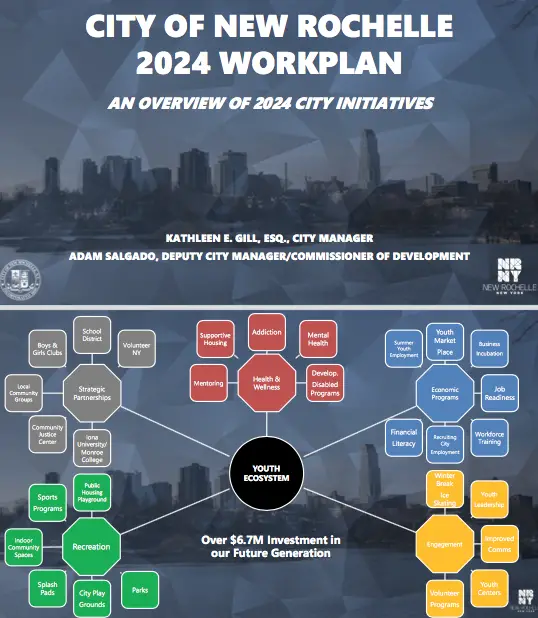New Rochelle has a new plan for 2024 outlining key priorities including an emphasis on the creation of affordable housing, fostering increased community engagement, youth programming and enhancements to public infrastructure including a ten-year flood mitigation program. The plan was developed and released by City Manager Kathleen Gill. New Rochelle is operating with a $305.5 million budget for 2024.

“We are taking a direct and realistic approach to tackle a growing demand for affordable housing, opportunities for career development, youth programming and much needed infrastructure improvements,” Gill said. “Through initiatives such as the reopening of the Section 8 Housing Choice Voucher program, the creation of innovative public realm activations and strategic partnerships with local institutions, we are laying the groundwork for a more vibrant and inclusive New Rochelle.”
The 2024 Work Plan calls for more events and gatherings in the city. It wants to see 500 opportunities for youth employment at city events and in city offices. It says that a “Mobile City Hall” will make elected officials more accessible.
The plan points to $78.8 million to be invested in capital projects through 2031. These include sewer enhancements, dam and roadway repairs, advanced neighborhood resiliency, parks improvement, and the replacement of the Hudson Marina parking structure. The 2024 Work Plan also includes beginning a ten-year flood mitigation program that it says will improve stormwater systems and drainage across the city.
The plan points out that 561 new affordable housing units are in the pipeline to be built in the city and it outlines an intent to establish a new waiting list for people who want to receive Section 8 housing vouchers.
The plan calls for increased government coordination with the Downtown Business Improvement District and Chamber of Commerce. It says developers should be encouraged to reach out and do more business with local firms. The plan says a retail task force should develop a program to revamp signs, awnings and façades to enhance the retail experience. It also calls for making use of vacant storefronts and implementing strategies to attract new “dynamic retail tenants” to the city.





















